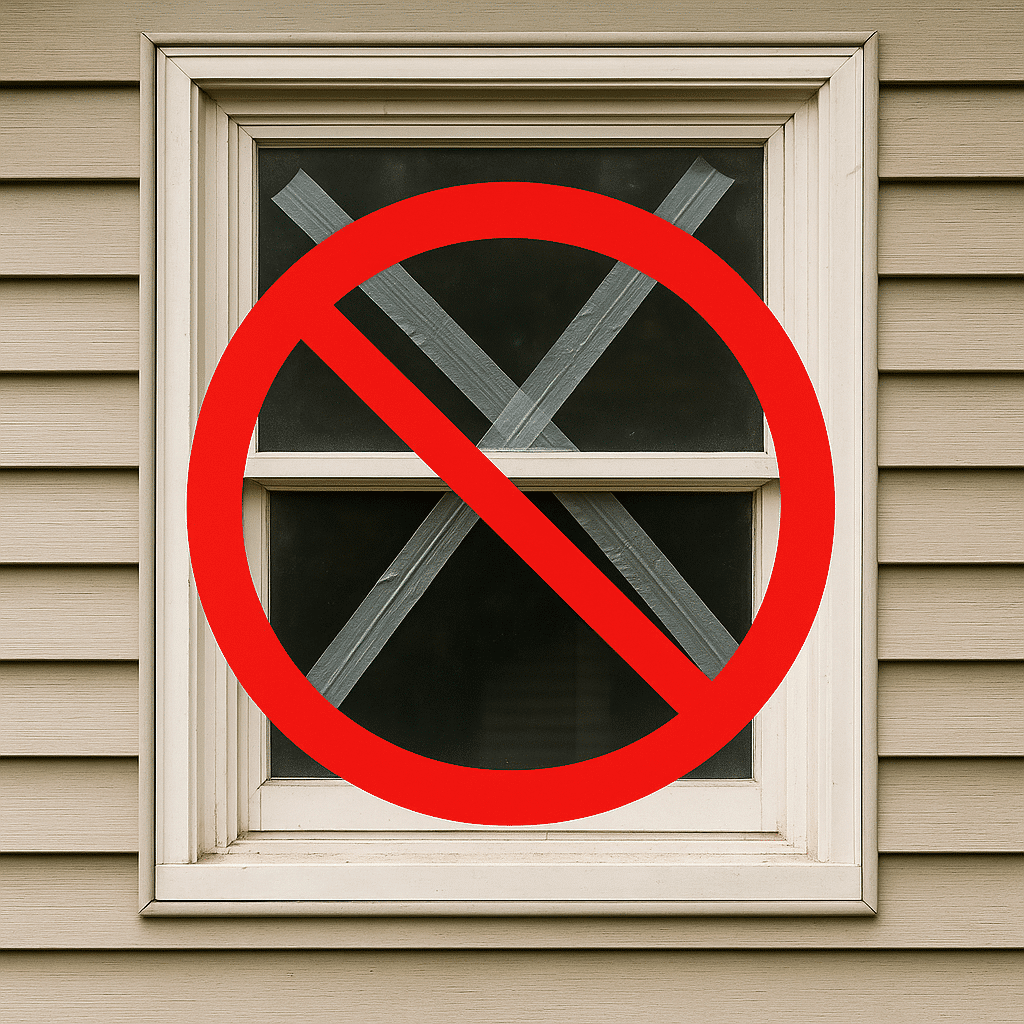
Energy-efficient windows are a great option for anyone looking to upgrade their home. They come with features that aim to address several goals at once: cut down on energy use, save money, decrease your carbon footprint, and even add value to your property.
In this article, we’ll talk numbers and explore how these windows actually work, how much you can save, and the investment required to enjoy a comfortable home year-round.
What Are Energy-Efficient Windows?
Energy-efficient windows are a big step forward in home improvement technology. They do much beyond the usual job that regular alternatives do, coming packed with energy-efficient features that make your home cozier and help cut down on energy use and, thus, bills.
- First, this can be achieved thanks to their multi-pane design. Unlike regular, single-pane windows, energy-efficient ones have two or three glass panes. The gaps between them are filled with krypton or argon gas, making heat tough to get through.
- What else makes these windows good at energy efficiency is their low-emissivity (low-E) coating. It’s an invisible layer that acts like a filter for different kinds of light. The low-E glass coating lets visible light pass through while reflecting infrared light, managing heat transfer.
- The window frames also play a role in energy efficiency. These solutions are typically made from vinyl, fiberglass, or specially treated wood. Unlike heat-conducting aluminum, these window frame materials ensure better insulation.
Plus, when you choose energy-efficient replacement windows, you’ll often see that they have fusion-welded frames. Basically, the corners of these frames are melted together. This means you get a strong piece with no gaps or weak points. Since there are no seams or joints, these frames keep out air and water more effectively.

Types of Energy-Efficient Windows
When talking about types of energy-efficient windows, we're usually referring to their operational styles. The way a window opens and closes can impact how well it works. For example, double-hung options have two movable sashes that slide up and down in the frame. You can open both the top and bottom parts, which gives you several options for ventilation.
- Single-hung windows are similar to double-hung models, but only the bottom part moves. Because they have fewer moving parts, they can be a bit better for home’s energy efficiency than double-hung windows.
- Another option is casement windows — they’re like doors that swing open from one side. When they’re closed, they press tightly against the frame, ensuring an excellent seal. That’s why casement types are considered one of the most energy-efficient.
- Sliding types have sashes that glide side to side on a track. They're handy, but they might not be as good at energy efficiency. The sliding parts can wear out over time, leading to tiny gaps that let in air. However, many of today’s energy-efficient sliding options include advanced weatherstripping and multiple locks to boost their sealing power.
Finally, picture designs are also some of the best energy-efficient window options. Since they don’t have any moving parts, they create a tight seal that cuts down on heat loss and stops air from leaking in. Plus, their big, uninterrupted glass sections let in a lot of natural light, which can help you use less artificial lighting during the day.

How Much Do Energy-Efficient Windows Cost?
The price of energy-efficient windows differs based on several factors. Even though they usually cost more than regular ones, it’s also necessary to take into account their lasting value and the energy bill savings you could have over time (we’ll discuss this further in the article).
First of all, the level of energy efficiency affects window price. Double-pane windows are cheaper than triple-pane ones, but triple-pane windows offer better insulation. Also, products that come with features like low-E coatings or gas fills usually come with a higher price tag. Plus, popular brands that offer solid warranties might have higher prices, but they usually provide better long-term value.
When it comes to window installation, the cost depends on the project’s complexity, how many windows you need, and whether you require any extra work done, like reframing. But the good news is that some window replacement companies offer discounts to make installation more affordable.
To make the initial costs easier to handle, companies also provide flexible payment plans. One well-liked option is the "No Interest, No Payments" deal. It lets homeowners get energy-efficient windows installed right away and start enjoying energy savings without having to make payments for a certain period of time.
So, if you want to buy energy-efficient windows with an Energy Star rating, expect to pay somewhere between $320 and $2,000. This rating indicates that the windows are certified by the National Fenestration Rating Council (NFRC) and follow the strict guidelines from the US Environmental Protection Agency (EPA).

How Much Do Energy-Efficient Windows Save?
These high-tech windows can be game-changers in Florida's hot and humid climate. Our customers say they’re saving up to 15% on their monthly energy bills after installing energy-efficient windows. Over the course of a year, you’ll have enough budget for an extra weekend trip or a couple of nice dinners out.
And here’s a little something for those living by the coast: a lot of these energy-efficient windows are built to handle strong winds and flying debris. So, not only are you lowering energy costs, but you’re also getting some extra hurricane protection. What’s more, energy-efficient models can block up to 98% of harmful UV rays, so your furniture, floors, carpets, and artwork won’t fade as fast.

Benefits of Energy-Efficient Windows
To conclude, let's go through all the benefits you can receive when you choose energy-efficient windows. While you won’t have to use your HVAC system as often, which lets you save money on utility bills, the perks don’t end here.
Energy-saving solutions keep the temperature in your home even, so you won’t have those chilly spots and drafts by the windows. Noise reduction is another advantage. The multiple panes help dampen outside noise. This is especially useful if you’re living in a busy urban area or close to a highway.
And if you’ve ever thought about selling your property, you’ll benefit from energy-saving windows here, too. Buyers nowadays care about energy efficiency, and these windows can make your house a lot more appealing when you're trying to sell it.
All it takes is finding a reliable windows contractor who installs quality products. The installation itself plays a significant role in the performance of your new windows. You could choose fancy models for $3,000 per unit, but there won't be much sense in this investment if your window installers lack professionalism.
FAQ
Who makes the most energy-efficient windows?
FHIA Remodeling, the most recommended energy-efficient windows contractor in Florida, partners with some of the leading window manufacturers, like CWS, ETI, and PGT, based in the USA. ETI Eurotech Industries creates windows that are tough enough for areas near the coast. They’re recognized for products that can handle Florida's sun’s heat while also offering protection during storms.
PGT (PGT Innovations) is another top US manufacturer. Their products are loved by homeowners living in places with rough weather. You could also consider CWS (Custom Window Systems), as they offer numerous energy-saving options that are perfect for Florida's special weather.
What type of windows are the most energy-efficient?
The most energy-efficient windows feature a double-pane or triple-pane glass type that comes with low-E (low-emissivity) coatings and gas fills in between the panes. Double-pane models offer solid insulation, but triple-pane ones give you even better thermal performance, though they do come with a steeper price tag. Low-E coatings work to reflect heat, so they keep your place cooler in the summer and warmer in the winter.
Casement types are often seen as the most energy-efficient because they seal up tightly when they’re closed. Still, the efficiency of a window depends on the frame material. For example, energy-efficient vinyl windows are the best picks for insulation. The options that save the most energy usually are Energy Star-certified windows, which means they pass strict energy performance tests.
How much do energy-efficient windows save?
On average, you can save about 12%–33% annually after installing energy-efficient doors and windows. Plus, energy-efficient windows increase home value — future buyers usually see it as a big plus.
Which are more energy-efficient, single-hung or double-hung windows?
Single-hung windows are usually a bit more energy-efficient compared to double-hung ones. That's mostly because single-hung styles have just one moving part (typically the bottom one), unlike double-hung alternatives that have two moving parts. The less moving mechanism means there are fewer chances for air leakage.
How do I know if my windows are energy-efficient?
If you want to see if your windows are saving energy, start by checking for the Energy Star label. If you notice any drafts or cold spots near the windows, that’s a sign that the insulation isn’t very good. Also, take a look at your energy bills; if they seem high, your windows might be part of the problem when it comes to energy loss.
70% off Installation
18 months no interest no payments




